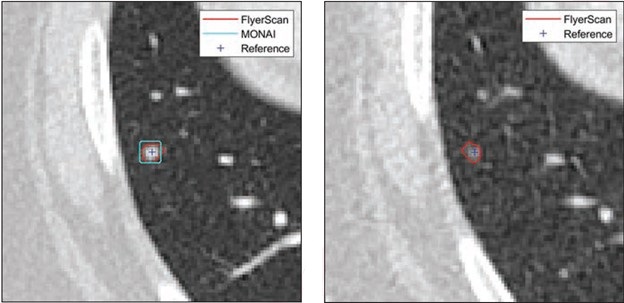CAD May Decrease Sensitivity of Pediatric Low-Dose Lung CT Scans
Images

Caution is needed when using low-dose CT protocols in combination with computer-aided detection (CAD) systems to help detect small lung nodules in pediatric patients, according to a manuscript published in the American Journal of Roentgenology (AJR).
“Two lung-nodule CAD systems demonstrated decreased sensitivity on low-dose versus standard-dose pediatric CT scans performed in the same patients,” wrote corresponding author Russell C. Hardie, PhD, from the department of electrical and computer engineering at University of Dayton, OH. “The reduced detection at low dose was overall more pronounced for nodules measuring less than 5 mm.”
The study included patients (32 female, 41 male; mean age, 14.7 years; age range, 4-20 years) who underwent both clinical standard-dose and investigational low-dose chest CT examinations within the same encounter from November 30, 2018 to August 31, 2020 as part of an earlier prospective study. Fellowship-trained pediatric radiologists annotated lung nodules to serve as the reference standard. Both CT scans were processed using two publicly available lung-nodule CAD systems previously trained using adult data: FlyerScan and Medical Open Network for Artificial Intelligence (MONAI). The systems’ sensitivities for nodules measuring 3-30 mm (n=247) were calculated when operating at a fixed frequency of two false-positives per scan.
Ultimately, sensitivity for detecting lung nodules measuring 3-30 mm at two FPs/scan for standard-dose and low-dose CT scans was 76.9% (190/247) and 66.8% (165/247), respectively, for the FlyerScan CAD system, and 67.6% (167/247) and 62.3% (154/247), respectively, for the MONAI CAD system.
Related Articles
Citation
. CAD May Decrease Sensitivity of Pediatric Low-Dose Lung CT Scans. Appl Radiol.
October 17, 2024